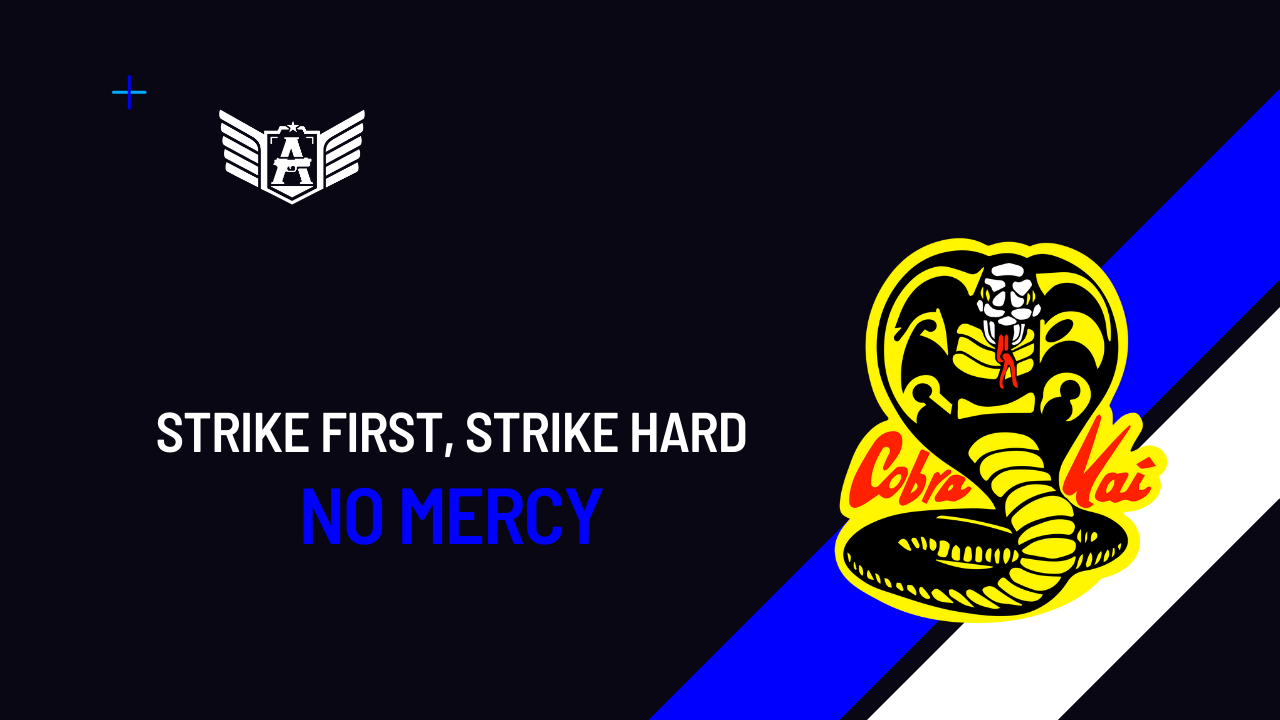
Strike first, strike hard, no mercy. Cobra Kai never die. Hold on, we’re not here to talk about movies or Netflix series, but this introduction is necessary, believe it or not. The movie Karate Kid (1984) tells the story of two karate schools that develop rivalry on the streets and philosophically: while Noriyuki “Pat” Morita (as Kesuke Miyagi) trains Ralph Macchio (Daniel Larusso) within his pacifist and reactive doctrine, William Zabka (Johnny Lawrence) receives instructions from Martin Kove (John Kreese) at Cobra Kai, a more proactive method.
Although the entire story was written to make Cobra Kai the villains and Miyagi-Do the heroes, it’s worth revisiting some of these concepts to discuss personal defense and unarmed combat.
There is an inevitable delay between an attack and a defense. The defender needs to perceive the attack; the image must be processed by the brain, and then it is necessary to organize and implement a defense or reaction. This process begins in about 200ms (Mülhim, I. T., & Akcan, F., 2022), which is slightly less than the time a boxer needs to land a jab (Kimm, D., & Thiel, D. V., 2015). In other words, when you start reacting, you’ve already been hit. Point for Lawrence: Striking first is a good strategy.

A street fight can quickly turn into a homicide scenario. It is neither possible nor desirable to confuse combat sports with a street brawl. Anything goes in the streets – stones, sticks, knives, or multiple opponents can come into play quickly, which is quite different from a controlled setting of a contact sport. More than ever, every strike counts, and in this sense, maximum energy must be applied in the minimum time, reducing the reactive capacity of your opponent(s). Strike hard.
Trying to reason with the unreasonable is a mistake that has caused many deaths and unfortunately will continue to do so as long as people do not understand the seriousness of a fight. In the United States alone, 665 people died in 2022 from injuries caused by the fists of their enemies. In the same year, 1630 people died from stabbings, 367 people died from impact weapons (batons, hammers, etc.), and 98 people from asphyxiation. When combat is inevitable, the best way to handle it is to win it as quickly as possible, with all the necessary violence. You should not put your life at risk. No mercy.

Despite the playfulness around the Cobra Kai vs. Miyagi-Do dilemma, outside of the cinema and competitions, it makes a lot of sense to think in terms of strike first, strike hard, no mercy. Time and the challenges of the scenario are obstacles for those who intend to defend themselves, and therefore, ending the threat quickly and violently is advisable. Sorry, Mr. Miyagi!

References
Mülhim, I. T., & Akcan, F. (2022). Comparison of simple visual and audiotory reaction times of martial arts athletes. European Journal of Physical Education and Sport Science, 7(5).
Kimm, D., & Thiel, D. V. (2015). Hand speed measurements in boxing. Procedia Engineering, 112, 502-506.
Statista. https://www.statista.com/statistics/195325/murder-victims-in-the-us-by-weapon-used/





Comment on “Strike first. Strike hard. No mercy.”